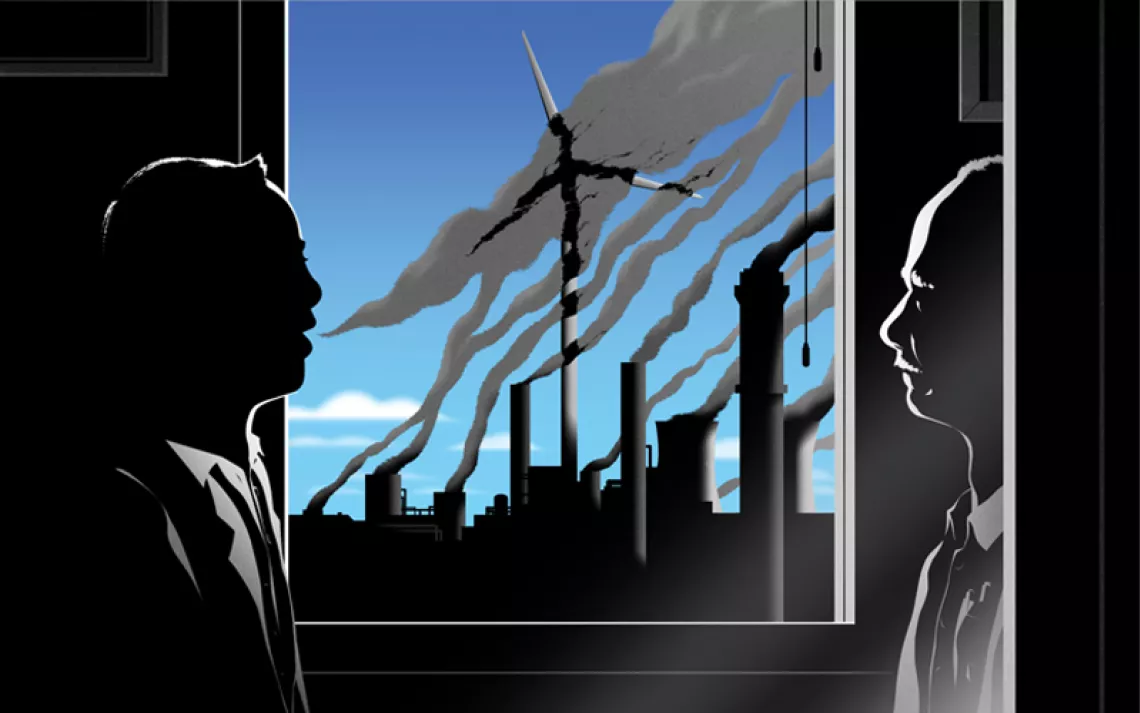What a Really Big Offshore Wind Farm Looks Like
THIS is how it's done. Here's what Denmark's Anholt wind farm looks like from the bridge of the Stena Nautica, a huge ferry that ordinarily plies between Grenaa, Denmark, and neighboring Sweden. I had the pleasure of visiting it recently (about which you can read much more in "Leading Edge" in the January/Feburary 2015 issue of Sierra). It was a challenge, frankly, to convey the awesome majesty of the sight. Part of it is enormous scale of the enterprise. Anholt, Denmark's largest offshore wind farm, consists of 111 turbines spread over 34 square miles. Each turbine is 465 feet high with a blade diameter of 394 feet--that is, longer than a football field. It's capable of producing 400 megawatts—4 percent of Denmark's entire power demand. Passing through them on even a very large ship was like the scene in a science fiction movie when a huge starship passes overhead. The project is nine miles offshore, out of sight of land, and the lack of reference points intensifies its epic appearance.
Environmentalists--especially Sierra Club types--tend to be unimpressed by massive human works. (For the indispensible primer on the subject, see John McPhee's "Encounters with the Archdruid.") Dams are problematic, cell towers abominations, concentrating solar plants controversial. We are also predisposed to find fault, even with projects that we should, in theory, support; the comments on my article, for instance, dwell heavily on the project's supposed effect on birds. (In the case of Anholt, at least, the effect appears to be truly minimal.) Part of what made the visit so striking for me was my understanding of the size of the challenge facing us, of shifting in the space of a generation or two from burning fossil fuels to producing clean, renewable energy. Here at last was proof that we are capable of responding in the scale necessary. Anholt and projects like it should be sources of pride, awe, and hope--something in far too short supply these days.
 The Magazine of The Sierra Club
The Magazine of The Sierra Club







